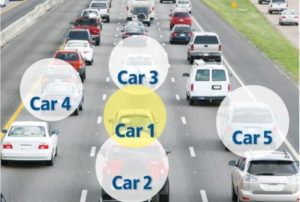 Purpose
Purpose
In Motor training school you have learnt how to drive and earned your driving license. Through the years of your driving experience, you have seen all – accidents, crashes, road rage, people fighting after the accident and so on.
There was a need to design a training program based on above experience that you can be in trouble on road not because of yours, but someone else’s mistake. How to foresee and handle such a situation is broadly termed as Defensive Driving. This training can even help you to be aware of how other drivers may react and avoid a possible collision. One gets benefitted in many different ways; controlling fear, snap decision making, quick reaction time, emergency care and safety. The course includes many more important points on driving techniques and maintenance of vehicle to avoid landing in such a situation.
Target Audience
- People driving company’s vehicle
- Heavy Vehicle drivers
- Delivery Boys
- Industrial Safety officers
Course Content
- Rules of defensive driving
- Components of defensive driving
- Components of active engaged driving
- What to do when you are stopped / stalled midway
- Cold weather / snow driving
- Steering into a skid
- Efficiency of various types of brakes in different situation
- Safety features in modern cars
- Distraction inside your car
- Distraction outside your car
- Sharing the road with other vehicles
- Changing lanes and speed adjustment
- Road scanning techniques
- Rear view adjustment and blind sector
- Hazards of multi-tasking while driving
- Different types of seat belt available and their purpose
- How to recognize signs of fatigue
- Safe distance from other vehicle – assured clear distance ahead
- Constrains of night driving
- Vehicle Maintenance
The standard Safe Practices for Motor Vehicle Operations, ANSI/ASSE Z15.1, defines defensive driving skills as “driving to save lives, time, and money, in spite of the conditions around you and the actions of others. It is a form of training for motor vehicle drivers that goes beyond mastery of the rules of the road and the basic mechanics of driving. Its aim is to reduce the risk of collision by anticipating dangerous situations, despite adverse conditions or the mistakes of others. This can be achieved through adherence to a variety of general guidelines, such as following the assured clear distance ahead and two second rules, as well as the practice of specific driving techniques. Some motorists describe defensive driving as “driving as if everyone else on the road were drunk.”
| Course | Fee INR | Duration | Course Timing | Date Commence | Remarks |
|---|---|---|---|---|---|
| Defensive Driving | 5,000 | 1 Day | 10:00-18:00 | On Demand |
